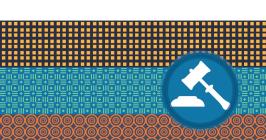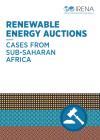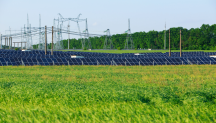

-
-
IRENA (2018), Renewable energy auctions: Cases from sub-Saharan Africa, International Renewable Energy Agency, Abu Dhabi.
Copied
/-/media/Files/IRENA/Agency/Publication/2018/Apr/IRENA_Auctions_Sub-Saharan_Africa_2018.pdf
Copied
Renewable energy auctions:
Cases from sub-Saharan Africa
Newsletter
Renewable energy auctions have emerged as an important mechanism to drive the adoption of renewable sources for power generation. Like in other regions, auctions can help countries across sub-Saharan Africa achieve record-low prices for solar photovoltaic (PV) and wind power. Ghana, Mauritius, Uganda, South Africa and Zambia have all run renewable energy auctions, while at least 15 more sub-Saharan African countries are developing such programmes for competitive procurement.
South Africa’s auction scheme stands out due to its size and comprehensiveness. In addition, it takes a longer-term view and appears particularly well integrated with overall economic and electricity strategies. Socio-economic and environmental considerations have increased the country’s motivation to adopt renewable energy auctions. At the same time, however, South Africa’s latest auction results have made PV and wind power cheaper than the average cost of power supply from the national utility and far below the cost of new coal-fired power stations.
A key factor to ensure the durability of an auction scheme is the need for independent and transparent auction management, which results in effectively designed power purchase agreements (PPAs) and other contracts. Auctions should also be closely linked to wider national development policies, notes this study of recent cases in sub-Saharan Africa by the International Renewable Energy Agency (IRENA).
Auctions remain highly specific to each jurisdiction, with underlying differences commonly driving the resulting electricity prices. Resource quality, financing and capital costs, risk allocation among various stakeholders, and specific project selection criteria, such as economic development aims or technical and environmental standards, all shape the final costs of renewable power at auction. All these cost drivers should be considered when comparing auction prices from different jurisdictions or times.
Understanding cost drivers, moreover, can help auctioneers to continually improve auction design and other investment conditions for renewables. Ugandan and Zambian auction schemes, for example, along with the latest South African scheme, ensure that site selection takes account of network infrastructure and environmental factors.
Even so, too much governmental involvement may add to costs and increase the investment risks for project developers, as was witnessed in suboptimal location choices in some sub-Saharan African auction schemes.




